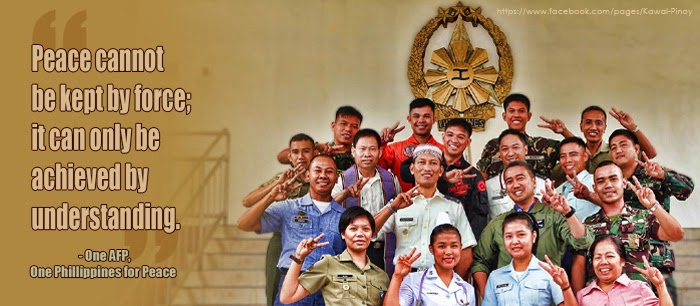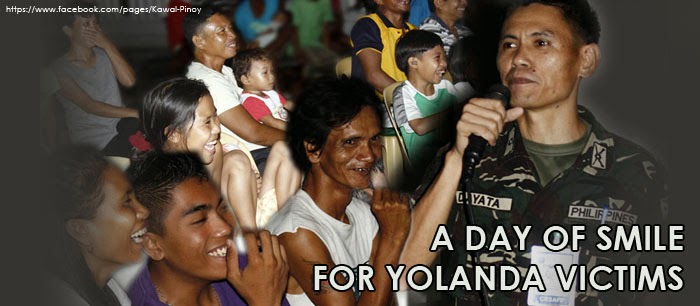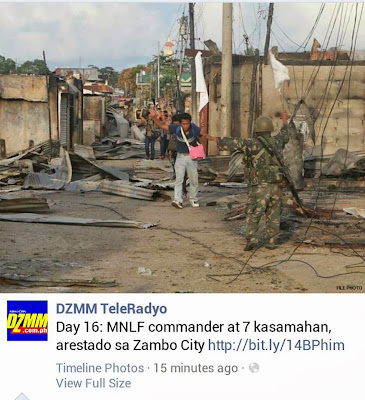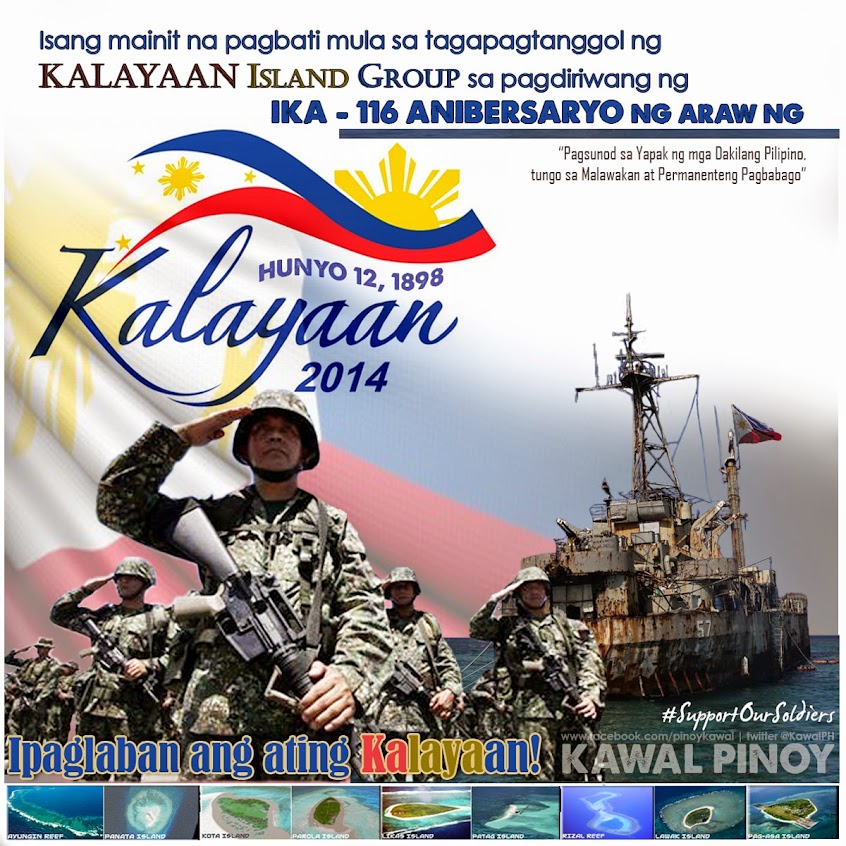Cpt Edwin Mirador, one of the heroes during the Zamboanga siege, was cited for his courageous actions during the rescue of two hostages from the hands of Misuari's men. Putting himself in the line of fire, he braved the enemy's volley of fire and the suppressive fire from his subordinates behind him, in order to protect the hapless civilians from possible crossfire. (Kawal Pinoy photo)
Watching the 'breaking news' about a major violent incident in a booming city of southern Mindanao on September 9, 2013, the soldiers of the Army's elite 3rd Light Reaction Company were expecting a possible combat action.
The news about Nur Misuari's faction of the Moro National Liberation Front that took in more or less 200 civilian hostages grabbed the headlines that day. The entire international community called the situation in Zamboanga City as a “humanitarian crisis”.
Fresh from a combat refresher training in Fort Magsaysay, the unit was deployed to reinforce the thinly spread troops which confronted Misuari's armed men in the city.
Trained on urban warfare, the 3rd LRC was ready to fight in a familiar terrain. The unit was also fully equipped with state of the art weaponry.
Disembarking from the C130 plane that carried them to Zamboanga City, they fully knew that they were plunged into a bloody battle against an enemy force that is holding civilian hostages as human shields.
They can already hear gunfire even before they went down from the Army trucks. All over Martha Drive in Sta. Barbara village, people were screaming in fear.
Captain Edwin Mirador's and his men's senses suddenly went on full alert. They were already in the war zone.
“I knew we were going to be sent there, too,” he said. “I've been preparing for it for days.”
The soldiers can hear people screaming, asking for help, though they could not see them due to walls around the barangay.
Mirador believed that the voices belonged to the hostages which they heard were being moved out by Nur's men.
He arranged his men according to plan with crew-served weapons and sniper teams to overlook the streets. He and his unit were given direct orders to save as many civilian as they can while minimizing collateral damage.
Fierce firefight began and there was no turning back. They were in the middle of a heavy firefight.
For the next days, he and his men inched their way to constrict the enemy in a smaller playing field. Some of the armed men surrendered after seeing their comrades fall one by one.
Saving the hostages
Right into the middle of the battle, Mirador saw right between them and the enemy position someone waving white flag from behind a concrete wall.
He was not sure if they were combatants or not. Bullets kept on raining on them but he had to be sure of his targets.
His heart was racing as he put his handheld radio near his mouth and called for all adjacent units to cease fire.
"To know their identities, I shouted on top of my lungs to let them hear me. I told them to come out slowly with their hands on top of their heads," said Mirador.
But due to the heat of the moment, the volley of fires from the enemy kept coming, endangering the couple who were obviously injured and can hardly walk.
Memories of his childhood were so much like the situation in Zamboanga that September.
As a child growing up with a soldier father, he experienced escaping from firefights like these and being hauled into Army trucks to evade Moro rebels in Busbus, Jolo, Sulu sometime in the 1980s.
He understood the fear and hardship these people might be feeling now, growing up in poverty and danger himself before he decided to follow hi father's footsteps.
Mirador, seeing the gravity of the danger by which the civilians were in, ordered his M240B gunner to provide suppressive fire towards enemy positions and, in an admirably show of valor, went in himself.
Knowing that to relay the information and to command someone else to conduct the rescue may be too late, rushed towards the location of the possible hostages and positioned himself behind them in front of heavy volume of enemy fires and provided them cover while firing his M4 rifle towards enemy position to ensure their safety.
By his act of courage, he was able to successfully rescue the hostages and brought them towards a safer area.
It was only later when he realized that he was able to save the West couple who were among those who had gone missing after their house was stormed by Habier Malik's men.
Everybody a hero
Mirador and his men faced the hardest battles of their lives yet around the buildings of Zamboanga City in the fourth week of September.
The enemy forces were holding a thickly concreted compound where they constructed 'rat holes' as their firing positions.
Soldiers got hit by enemy fire one at a time. He wanted to put an end to the bloodbath that they experienced.
Taking with him a 90mm recoilless rifle of the Army's 32nd Infantry Battalion, coupled with .50 Caliber Armored Personnel Carrier (APC) fires, he directed the company gunners and Sniper/Observer Platoon to position their crew-served weapons and sniper teams at a vantage position that overlooked the enemy's stronghold.
In one of the heavy exchange of fires, he lost one of his men, the first fatality of his unit. Sniper Team members
Cpl Joseph Custodio and his buddy Cpl Jelly Bardon were providing interdiction fires for the maneuvering troops when they received heavy volume of fires at their position, killing Custodio instantly while injuring Bardon.
Seeing his soldiers who were bleeding profusely, he directed his men to recover them. He couldn't describe the pain he experienced upon learning that Custodio succumbed to his gunshot wound.
Instead of being demoralized, he became more determined to press the fight and throw all his effort to culminate the fight.
He found out that the rebels were sneakily utilizing holes on the walls in order to target their soldiers, giving them the advantage of cover and concealment.
He and his fellow officers crafted strategies in order to clear the buildings in the area of Moro rebels using the tactics they learned in training. They hatched a plan and executed it boldly.
With exemplary leadership, bravery, stability under pressure and maintained composure amidst enemy fires they were finally able to breach enemy positions and win the fight.
He was so proud of his men who emerged with their own stories about heroism and perseverance.
For his part, Mirador was able to draw strength and sensitivity from his humble beginnings.
His father's selfless service to the country served as his beacon of guidance as he led his men through the hardest mission that he had experienced in his life.
Note: Cpt Edwin Mirador was nominated to received the AFP's highest combat award, the Medal for Valor. His recommendation is still being deliberated by the AFPs awards board.










IDOL ko na kayo Capt. Mirador.. :)
ReplyDeletedid he received his Medal for Valor?